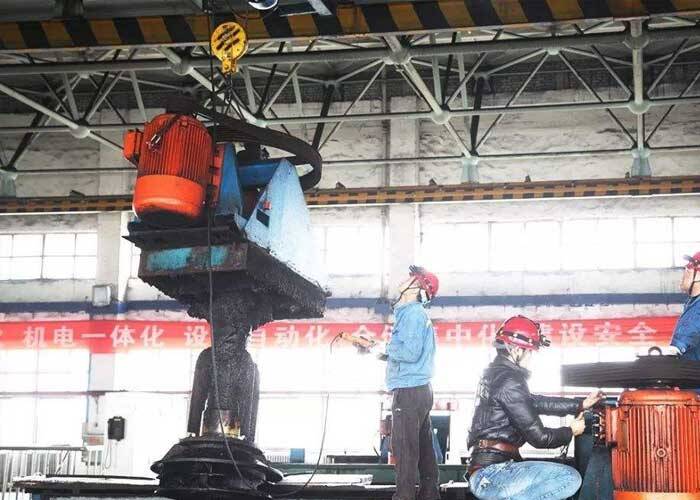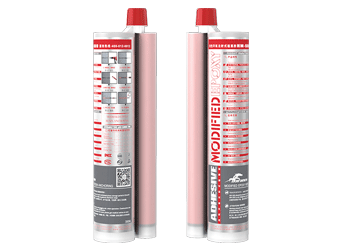Solutions
Horse Construction offers full range of structural strengthening materials with technical supports, documentation supports, products supports, project supports.
structural strengthening

Project Overview
The main building of Shanghai Energy Datun Coal Preparation Plant was built in 1979. It is a multi-storey frame structure with four spans from north to south, with a column spacing of 7m, and 18 spans from east to west. The column spacing is 7m, and the story height ranges from 4 to 9 m. The total building height is 33.40. m. The design concrete is No. 200 (early concrete strength mark). Due to the age of the plant, it has undergone many technological transformations during the period, resulting in the internal structural load has changed greatly from the original design layout, and there are signs of damage to the concrete frame beams and columns. After the structural appraisal of the Chinese Academy of Building Sciences, the concrete structure of the project must be reinforced.
Since the project is an industrial plant, the internal production equipment has already been in place, and the factory requires that the reinforcement of the project cannot affect the normal operation of the production equipment, so the project adopts different structural strengthening reinforcement techniques according to the internal equipment space and parts of the plant
1 Enlarged section reinforcement method for concrete frame columns
Enlarged cross-section reinforcement method, that is, concrete-clad reinforcement method, is to increase the cross-sectional area and reinforcement of the original concrete components by pouring new reinforced concrete. So as to improve the bearing capacity and rigidity of the component, reduce the slenderness ratio of the column, and achieve the purpose of strengthening the original component. When using the enlarged section method to reinforce, according to the different stress properties, structural characteristics and reinforcement requirements of the original components, the structural forms such as single-sided enlargement, two-sided enlargement, three-sided enlargement and four-sided enlargement can be adopted. The enlarged section method is a traditional reinforcement method. The process is simple, the application is wide, and it can be widely used for the reinforcement of concrete structures such as beams, slabs, columns, and walls. The advantage is that it can increase the rigidity and deformation ability of the component while increasing the bearing capacity of the component, and in some cases can also enhance the reliability of the connection. However, on-site wet work has a large workload and a long maintenance period has a certain impact on production and life.
In addition, the cross section is enlarged, there are problems such as lateral stability during construction, and the reinforcement will have a certain impact on the appearance of the original structure and the clear space of the house. There is a key process in the construction of the cross-section of concrete members to increase the chemical planting technology. The new technology of planting bars is to use high-strength chemical adhesives to make the steel bars, screws, etc. and the concrete hold firmness, so as to achieve the desired effect. After construction, it produces high load bearing capacity, is not easy to shift or pull out, and has good adhesion performance, without any waterproof treatment. Because it is fixed by chemical bonding, it not only does not cause expansion and damage to the substrate, but also strengthens the structure. The construction is simple and rapid, safe and in compliance with environmental protection requirements, and is the most effective method for reinforcement of reinforced concrete structures in construction projects.
2 Reinforcement method of concrete frame column with outer steel
The outer steel reinforcement method is to wrap the steel or steel plate and other materials on the outside of the reinforced concrete member to be reinforced. Through the joint action of the outer steel and the original member, the bearing capacity and rigidity of the member are improved to achieve the purpose of reinforcement. This method mainly improves the bearing capacity and deformation capacity of the original component by constraining it, which can greatly increase the bearing capacity of the component. It is mostly used for column reinforcement and also for beam reinforcement. For columns with rectangular cross-sections, angle steels are generally wrapped around the four legs, and horizontally welded to form a whole. For circular section columns, flat steel and sleeves are often used. For beams, only the side under tension can be reinforced with angle steel. The steel-clad reinforcement method is divided into two types: dry and wet: the dry-clad method is that the angle steel is directly wrapped around the reinforced member. The wet wrap method is to leave a certain distance between the angle steel and the reinforced member, and pour concrete in the middle. This is actually a composite reinforcement method that combines the wrap steel and the wrap concrete. Wet-clad steel reinforcement can greatly increase the load-bearing capacity of components, and is mainly used to reinforce compression components that bear heavy loads. The outer steel reinforcement method is reliable in force, simple in construction, and has a small workload on site, but uses a large amount of steel. It is suitable for the reinforcement of concrete structural members that are not allowed to significantly increase the cross-sectional size of the original members, but require a substantial increase in their bearing capacity.
3 Steel plate reinforcement method for concrete frame beams
This method of construction is relatively simple. One must pay special attention to the surface treatment of concrete and steel plate. For the bonding surface of the old and heavily soiled concrete components, first use a hard-bristled brush moistened with a high-efficiency detergent to clean it, and then rinse with water after brushing off the surface grease and dirt. Then polish the bonding surface to remove the 2-3mm thick surface layer to expose a flat new surface, remove the dust, and then wipe the surface with acetone. For the clean concrete surface, you can directly polish the bonding surface, remove the 1-2mm thick surface, make it level, remove the dust, and then wipe the surface with acetone. The surface treatment of the steel plate should be polished with sandblasting, emery cloth, or grinder according to the embroidering condition, so that the steel plate appears metallic luster, and the polished grain is perpendicular to the force direction, and then wiped clean with acetone. Second, pay attention to the choice of adhesive. At present, there is a mixed bag of building structure adhesives in the domestic market, and the choice of adhesives must be cautious. Third, pay attention to the details in the process of glue dispensing and pasting. The adhesive must be prepared in strict accordance with the ratio required by the instructions, especially the amount of curing agent must be mastered, the mixing must be even, and the paste surface must be full and dense when pasting. Fourth, pay attention not to disturb the steel plate in the curing stage.
4 Carbon fiber reinforcement technology for the bottom of concrete frame beam
Carbon fiber cloth reinforcement technology uses carbon fiber cloth and special structural glue to reinforce building components. The strength of carbon fiber cloth used in this technology is about 10 times that of ordinary secondary steel. It has the advantages of high strength, light weight, corrosion resistance and durability. The thickness is only about 2mm, which basically does not increase the cross-section of the component, which can ensure that the carbon fiber cloth and the original component work together. It is a new concrete structure reinforcement technology that has been gradually developed in recent years, and has obvious advantages compared with traditional concrete structure reinforcement technology.
According to the structure appraisal, carbon fiber cloth was pasted on the bottom and top of part of the frame beams in the factory building. Due to the increased load on some floors, it was necessary to paste carbon fiber cloth on the bottom of the concrete slab.
In addition to the advantages of the steel plate reinforcement method, the externally bonded carbon fiber composite material reinforcement has high chemical resistance and protection of the reinforced structure, which improves the durability of the structure. The material has high strength and less debt for external paste reinforcement (small thickness). The load increase is minimal, and the shape and size of the original structure are hardly changed. The construction is convenient and the construction period is short. During reinforcement, there is less noise and less dust, which has less impact on the use environment of the structure.
Relying only on the carbon fiber sheet itself cannot give full play to its strong mechanical properties and superior durability. It can only be achieved by adhering the carbon fiber sheet to the surface of the reinforced concrete structure through epoxy resin and tightly combining with it to form a whole work together. The purpose of reinforcement. Therefore, the performance of epoxy resin is one of the important keys. Epoxy resins have different properties due to different types and are adapted to the different requirements of various parts. For example, the primer resin has a good penetration effect on the concrete and can penetrate into the concrete to a certain depth. The epoxy resin glued to the carbon fiber sheet is easy to "penetrate" the carbon fiber sheet and has a strong bonding force. Depending on the use temperature, resins are also divided into summer and winter resins.
Concluding remarks
According to different reinforcement process requirements, strictly control key nodes and procedures. Due to the normal operation of the factory's production equipment, the construction is difficult and time is tight, so the selection and optimization of each plan is very important. In actual construction, using the scheme described in this article not only met the requirements of the construction period, but also reduced the difficulty of construction. The transformed plant has been running so far, no abnormal phenomenon has been found, it has been running well, and has achieved obvious economic and social benefits.
You can find anything here you are in need of, have a trust trying on these products, you will find the big difference after that.

Modified epoxy resin structural perfusion adhesive, specifically for supporting adhesive bonded steel reinforcement

Two-components modified epoxy resin adhesive, with high quality plastic tube, double cartridge package for anchoring